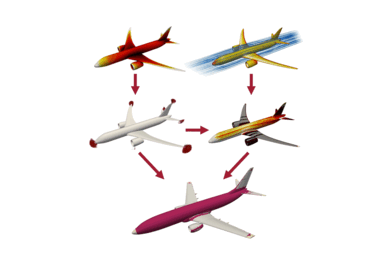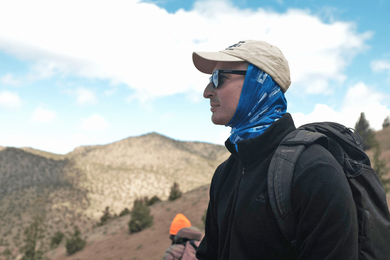CAMBRIDGE, Mass. -- What do mountains, wrinkled slacks and a crushed soda can have in common? The answer: all have been crumpled.
In the September 2 issue of Nature, MIT researchers and colleagues describe the geometry and physics behind the basic building block of a crumpled object: a cone-like deformation reminiscent of a coffee filter.
"We have described the 'hydrogen atom' of crumpling," said Lakshminarayanan Mahadevan, the Karl Van Tassel Career Development Associate Professor in the Department of Mechanical Engineering. Much as chemists' understanding of the hydrogen atom aids their work in studying more complicated molecules, the new work will aid scientists' understanding of crumpling phenomena on scales ranging from the formation of mountains to the crinkled red blood cells that characterize one disease.
"We can never fully understand such phenomena, which are ubiquitous, without understanding the basic elements involved," Professor Mahadevan said.
Mountains, wrinkled pants and other crumpled materials all begin as a thin sheet, be it the Earth's crust or a smooth swatch of fabric. When that sheet is packed into a smaller volume -- as happens, for example, when you crush a piece of paper into a ball -- it crumples. And the basic element of a crumpled object is the cone-like structure.
"When there are many of these structures, they interact with each other and are responsible for the ridges and peaks that one observes in a crumpled sheet," Professor Mahadevan said.
"One only has to look as far as one's shirtsleeve or trouser knee to realize this -- a fact that is beautifully illustrated in the chiaroscuros of Leonardo da Vinci and Albrecht Durer showing the complex draping patterns of textiles." (da Vinci is referenced in the Nature paper.)
In the current work, the researchers explain the geometry of the cone-like structure, its response to mechanical forces and its stability. Next, they do the same for a more complicated problem: two such structures connected by a ridge.
The result, said Professor Mahadevan, "is a unifying concept in the sense that if you ever have a thin sheet of any material being subject to compressive forces, it will always respond by eventually forming these shapes and ridges in the way we describe."
The analysis that defined these shapes and ridges also led to other insights. For example, the researchers found that in the initial stages of crumpling everything is dominated by bending (rather than stretching).
In their paper, the researchers also suggest that further studies of crumpling could take advantage of the pops, snaps and other sounds associated with the loss of stability of the ridges and peaks. Such sounds differ in intensity depending on the stage of crumpling, "so by listening to them we may be able to explore how the crumpling is actually proceeding," Professor Mahadevan said.
How did he come to work on this general problem? "I have a deep interest in geometry and how it relates to the everyday world," he said. Last year he and colleagues published another paper in Nature that described the buckling behavior of thin filaments. An everyday example? A coiling stream of honey.
"These seemingly mundane everyday problems are often anything but. Yet their very ubiquity challenges us to explain them," Professor Mahadevan concluded.
Coauthors of the Nature paper are Professors Enrique Cerda and Francisco Melo of the Universidad de Santiago de Chile and Sahraoui Chaieb, a postdoctoral associate in MIT's Department of Mechanical Engineering.
The work was supported by Professor Mahadevan's Karl van Tassel chair, a Chilean Presidente de la Rep�blica Postdoctoral Fellowship, a postdoctoral fellowship from the Universidad de Santiago de Chile and the Chilean C������tedra Presidencial en Ciencias.





